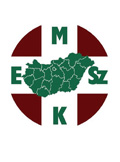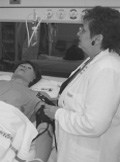The eLitMed.hu medical portal uses computer cookies for convenient operation. Detailed information can be found in the Cookie-policy.
Journal of Nursing Theory and Practice - 2010;23(06)
Content
[Scientific reporting in health science]
[Health science professionals are increasingly expected to addressing professional problems to scientifi c standards, and to present the results to the professional community. Specialists with higher-education qualifi cations must not only be capable of reading scientific papers, but must also be capable of carrying out studies of this type themselves, and communicate the results. The purpose of this essay is to describe the historical antecedents to medical and health science papers, the milestones in the evolution of the scientifi c essay, and today’s observable trends in the writing of professional papers. The authors, with a review of specialist literature, summarise the main genre-specifi c features of today’s publications, and also make reference to their suitability for use in health science papers. In addition to written papers they also touch on the fi ner points of lecturing and poster design, with the aim of facilitating the presentation, both at home and abroad, of scientifi cally studied practical healthcare problems.]
[Trends in nurses’ conversation-leading skills]
[Aim of the study: The authors, in the course of their survey, assessed the conversation-leading skills of nursing students. Their objective was to analyse the extent to which the students’ conversational skills fulfi l the criteria for client-oriented treatment. Methodology and sample: The sample for the cross-section survey, conducted using the triangulation method, was selected using random sampling from among third-year students at the Nursing Department of Faculty of Health Sciences and Social Studies at the University of Szeged. The sample consisted of 55 full-time and correspondence nursing students. For the data gathering they used Helembai’s Trap Test method. The data was analysed using a combination of qualitative and quantitative methods. Results: The results pointed to domination of the studied conversations by the nurses. In the course of the communication the nurses primarily attributed cognitive communications to themselves, and affective communications to the patients. The nurses correctly recognised the importance of the principles of client management, which is shown by their effort to achieve a cooperative conversation-leading style. Conclusions: Based on the results, the principle of client-orientation is not fully upheld in the interactions of everyday nursing practice, a role in which is played by the biomedical focus and task-centred, paternalist approach that can still be observed in nursing today.]
[The simulator-based education methodology]
[The advantage of the simulator-based education is that while students could previously only practice the procedures for certain tests and treatments using demonstration equipment, with the simulator they can now also monitor the effects of the treatments. The objectives of the simulation-based course were determined based on the premise that practicing a healthcare profession does not usually require students to say or write down what they know, but to be capable to use their skills in the course of treating patients, in various situations, for the resolution of a diversity of tasks and problems. In the simulation exercises they fi nd themselves in situations where, through simulations of physiological and chronic conditions they have an opportunity to observe the normal and pathological functioning of the human body, to be a part of the whole treatment process, and to develop their professional skills through constant interaction. The authors give a brief overview of the opportunities for application of clinical simulations in an educational setting, and also describe how they incorporated the practice-room programs based on the patient simulator into the syllabi of the various departments, and how the traditional teachercentred imparting of knowledge can be replaced by problem-based learning in an open, multimedia study environment. They systemise their learning and teaching methods, and use specifi c examples to demonstrate which target skills can be achieved with problem-oriented teaching methods.]
1.
Clinical Neuroscience
[Headache registry in Szeged: Experiences regarding to migraine patients]2.
Clinical Neuroscience
[The new target population of stroke awareness campaign: Kindergarten students ]3.
Clinical Neuroscience
Is there any difference in mortality rates of atrial fibrillation detected before or after ischemic stroke?4.
Clinical Neuroscience
Factors influencing the level of stigma in Parkinson’s disease in western Turkey5.
Clinical Neuroscience
[The effects of demographic and clinical factors on the severity of poststroke aphasia]1.
2.
3.
4.
5.






